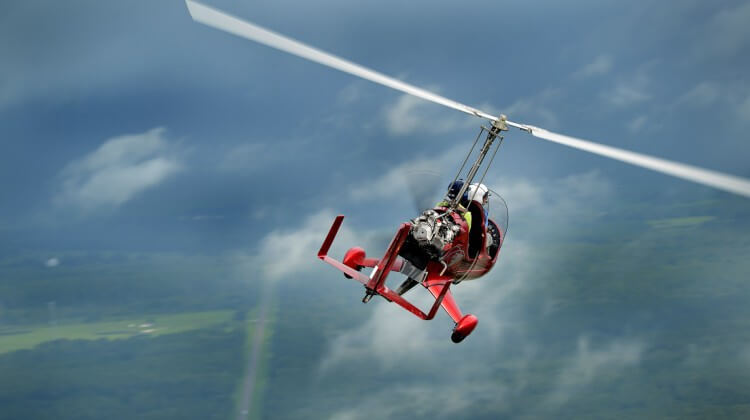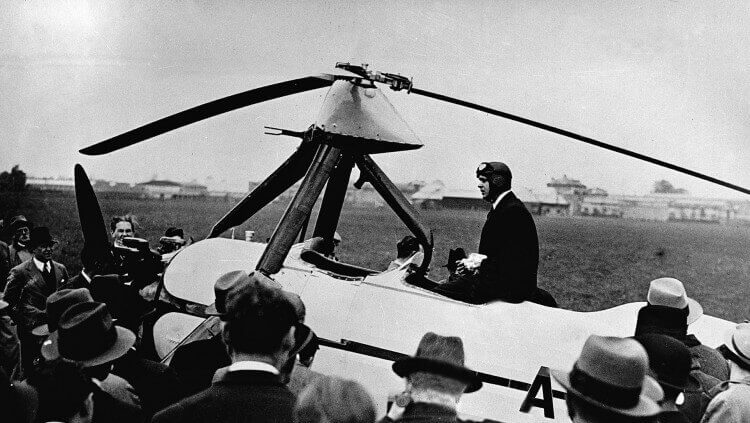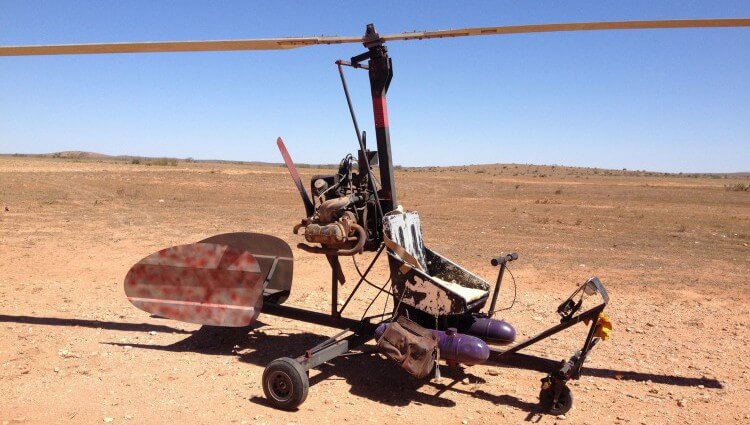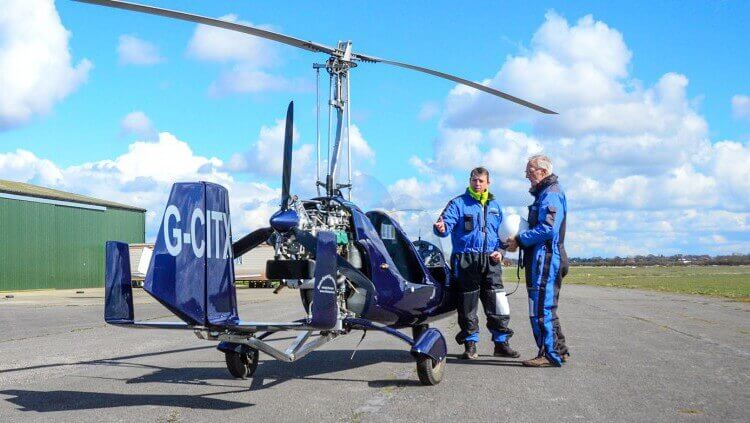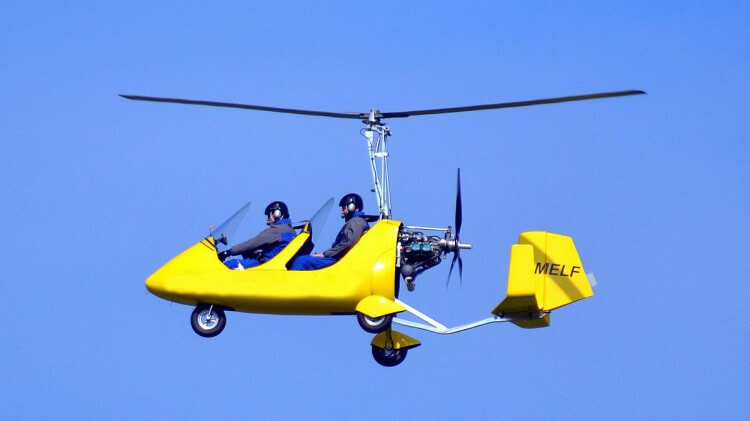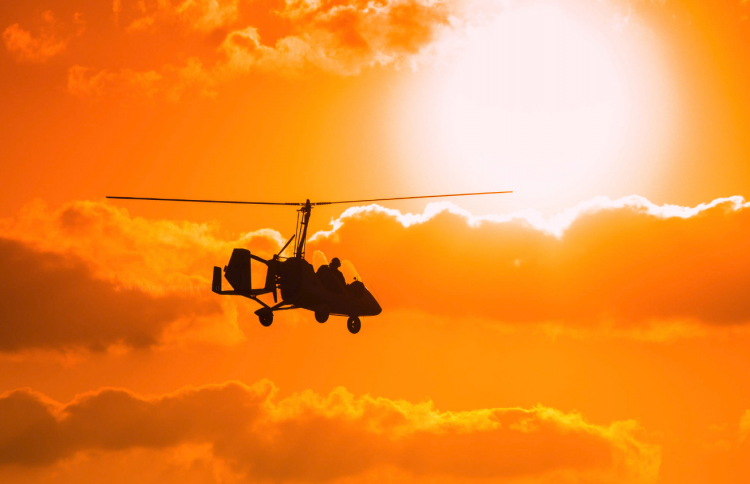
Get Your Rotors Running: All You Need to Know About Gyrocopters!
Look, up in the sky! Is it a bird? Is it a plane? No – and it’s not Superman either. They’re gyrocopters! If you love James Bond movies as much as we do, that memorable scene from “You Only Live Twice” might crossing your mind right now, with James Bond flying in his gyrocopter “Little Nellie” in the attempt to locate a SPECTRE base in Japan. These funny looking aircrafts have captured the hearts of many people since then, so we’ve decided to put together a handy guide that outlines all you need to know to fly these amazing machines!
What are gyrocopters?
Gyrocopters, also known as gyroplanes, autogyros or rotaplanes, are an unusual type of flying machine that belong to the “rotorcraft” category aviation. Although they look similar to helicopters, their construction and way of flying is completely different. To put it simply, gyrocopters have spinning blades on top to provide lift (similar to helicopters), but the rotors are not powered by the engine, instead gyrocopters have a propeller engine on the back that harnesses wind energy to provide thrust.
How do they fly?
So what kind of magic trick do they use to take flight? It’s certainly not a matter of hocus-pocus, but instead a phenomenon called “autorotation”. As mentioned above the rotor isn’t engine-powered, and this is because it was created to spin on its own (or autorotate). When the propeller moves the gyrocopter forward, it pushes wind through the rotor blades to spin really fast and have enough power to lift up in the air. Not as complicated as you thought, right?
When were Gyrocopters created?
Now that you know how they work, what about a history lesson? The father of the gyrocopter is Juan de la Cierva, a Spanish engineer, who in the early 1920’s was obsessed with creating an aircraft with three engines that could fly safely in lower speeds. De la Cierva created a few protoypes (the C1, C2 and C3) but they all failed due to mistakes in the rotor design. That was until, in 1923, when de la Cierva completed a full flight with the C4 model, which he called “autogiro” in spanish. And thus, the modern Gyrocopter was born!
How are Gyrocopters different to other aircraft?
Now that we have established what gyrocopters are and how they work, it’s time to learn what separates them from other aircraft like helicopters or planes. Gyrocopters tend to be easier to fly as they only have three flight controls (rudder pedals, a throttle and a control stick) which is way simpler than a plane or helicopter, making it perfect for beginners who have never flown before. In addition to this, gyrocopters don’t require as much space to be able to take off or land as aeroplanes or helicopters do. Most gyrocopters nowadays only require around 15ft of runway to go up in the sky and around 20ft for landing. That means they can be flown from practically everywhere. All you need is a garden big enough, and you’re away!
Another advantage of flying gyrocopters is they do not stall due to their constant autorotation system. Even if the air stops flowing, lift power won’t be lost. Instead, the rotor will start slowing down, but still keep spinning and therefore creating lift power, which allows the gyrocopter to descend gently and safely – not just fall abruptly.
How much do they cost and do I need a pilots license?
Most factory built gyrocopters, like the MT-03 (one of the most popular ones) cost around £35,000-£40,000 pounds and are approved by the United Kingdom Civil Aviation Authority (CCA) to be used in the UK. Any other amateur built or modified gyrocopters are regulated by the Light Aircraft Association (LAA).
Not only that, but you would also need to apply for a Private Pilot License (PPL) on the CAA website if you want to fly one solo. This requires both theory and practical exams, you can check out our in-depth guide on obtaining a PPL for more information.
What should I wear when flying one?
This is not as silly a question as you might think. Whether you’re flying in an open or closed cockpit, it’s important to wear adequate clothing. That means comfortable trousers and covered shoes (no sandals or high heels). You’ll also be provided with a flying suit, gloves and a helmet so remember to dress lightly if its a hot day. You will also be provided with radio communications so you can talk with the pilot.
How much training will I need?
This really depends on the individual as everyone learns at a different pace, but normally it would take around 30-40 hours of training to be able to learn how to fly a gyrocopter. Of those hours, 15 will need to be under the supervision of a flying instructor, plus another 10 hours flying solo. These hours are reduced if you already have another type of aircraft license, like a Microlight or Fixed Wing.
Once the training course is finished, you will have to go through a theory test as well as a practical assesment, known as the General Flying Test, this consists of a series of manoeuvres and procedures under the supervision of an examiner.
If, however, you’re not thinking about your pilots licence just yet; a Gyrocopter flying experience could be the way to go.

